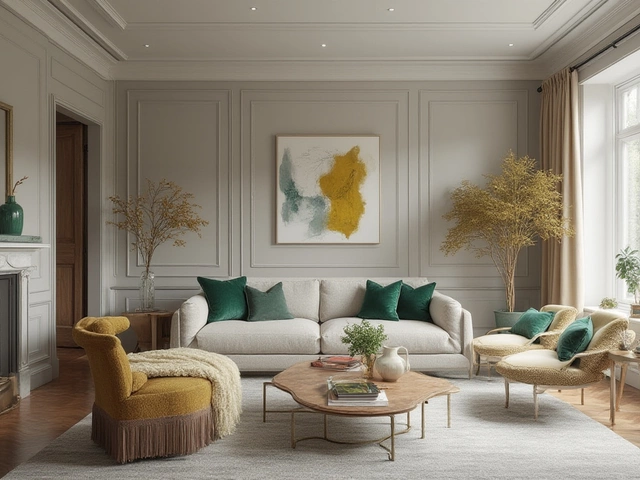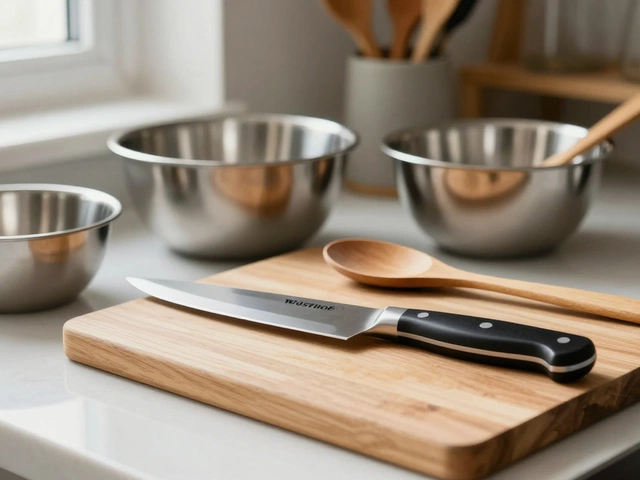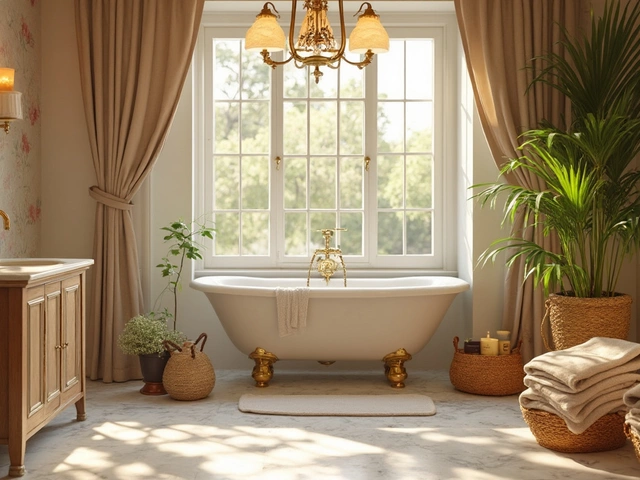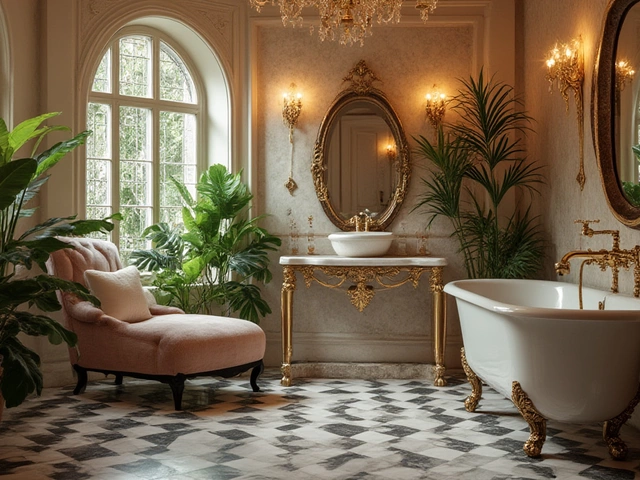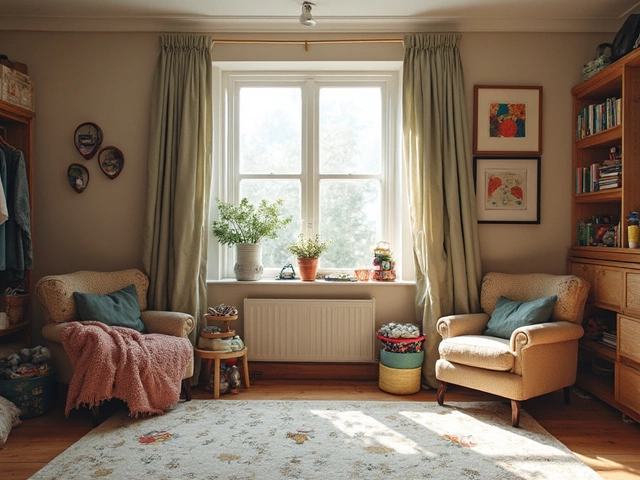Best Rugs to Hide Dirt: Top Choices for a Clean-Looking Home

Rugs are more than just decorative pieces; they have the magical ability to tie a room together while adding warmth and softness. But, as anyone with a bustling household knows, they can also be magnets for dust, dirt, and stains. That's why finding the perfect rug that not only complements your décor but also isn't a pain to maintain is essential.
When deciding on the best rug to disguise unavoidable dirt, it's wise to consider the material, color, and pattern. Some fibers naturally repel dirt and stains better than others. You’ll find a mix of colors and intricate patterns can work wonders in masking those pesky marks that appear out of nowhere. Meanwhile, textured surfaces help in camouflaging crumbs and minor stains.
In the next few sections, we'll walk through the most effective strategies for selecting a rug that keeps your floors looking fresh without constant cleaning. Let's make your sanctuary beautiful and practical!
- Understanding Rug Materials
- Color and Pattern Choices
- Benefits of Texture
- Cleaning and Maintenance Tips
- Top Rug Recommendations
Understanding Rug Materials
Choosing the right rug for your space goes beyond aesthetics; it involves understanding how different materials can affect maintenance and longevity. Best rugs for hiding dirt often rely on the properties inherent in their fibers. Natural fibers like wool are celebrated for their durability and stain resistance. Wool has this fantastic ability to repel dirt due to lanolin, a natural oil in wool that essentially gives it a self-cleaning property. When dirt and spills occur, wool fibers can often be cleaned with just a bit of elbow grease and a mild soap solution. Not only is wool resilient, but it also brings a cozy, luxurious feel to your floor, making it a timeless choice for many homeowners. However, wool rugs can be on the pricey side, which sometimes makes them an investment piece.
Synthetic fibers, particularly polypropylene, have gained traction because of their practicality and affordability. Polypropylene is engineered to resist stains and fading, making it an incredibly low-maintenance option. Unlike some natural fibers, it holds its color well, even in rooms drenched with sunlight daily. Here's where it shines in the category of dirt-resistant rugs: its fibers tend to not hold onto dirt as easily, allowing a quick vacuum to often restore its appearance. Moreover, this material is budget-friendly, making it accessible for most households looking to redesign on a dime.
"The right rug material not only complements your home aesthetically but also makes day-to-day life simpler," says Sarah Richardson, interior design expert. "Opt for materials that are both durable and easy-care, especially in high-traffic areas."
For those who enjoy a more bohemian or rustic touch, jute and sisal offer a natural, earthy texture, although they're not the most resistant against stains. These materials fit best in spaces where food spills and heavy foot traffic are infrequent. It's important to note that while they deliver on texture and organic appeal, upkeep can be challenging due to their absorbent nature. They're typically favored in living rooms and bedrooms rather than dining areas or kitchens.
For families with kids and pets, considering a blend of natural and synthetic fibers can be advantageous. Blends may provide the softness of natural fibers and the stain resistance of synthetic materials, offering the best of both worlds. These mixes are perfect for those looking to enhance durability without compromise on design and comfort. The blend gives you the comfort underfoot and still conceals the occasional spill or dirt track.
As homeowners become more environmentally conscious, the demand for eco-friendly materials like cotton and bamboo is on the rise. Cotton rugs are easy to clean but might show wear quicker than tougher options. Bamboo proves to be surprisingly durable and easy to wipe clean, making it a stylish and eco-friendly option for your home. However, each choice should reflect your lifestyle, ensuring that your rug remains both functional and stylish. It's wise to carefully weigh these factors when selecting a rug that will complement your décor while serving your practical needs.
Color and Pattern Choices
Choosing the right rugs for your living space isn’t just about the texture or material; color and pattern play crucial roles in maintaining a visually clean environment. The best way to hide dirt is to opt for rugs in dark or earthy tones. Shades like brown, midnight blue, and deep gray are particularly effective at concealing everyday mishaps — think footprints, pet fur, and even small spills. Lighter hues, while attractive, tend to highlight dirt, making them less suitable for high-traffic areas.
Patterns work wonders in abstracting dirt. A rug with a busy design, such as floral or geometric, tends to distract the eye from individual stains. It’s the same principle fashion designers use when picking patterns to disguise flaws or create illusions. You might find that choosing a rug with a classic Persian design or modern abstract artwork not only elevates your décor but also keeps it looking pristine between cleanings.
Interestingly, according to a survey by the American Home Furnishings Alliance, 78% of respondents said they prefer patterned rugs because they’re ‘family-friendly’ and less likely to show dirt immediately. This reinforces the idea that getting a rug with a complex design could be savvy for an active household. It’s less stress on the eyes and fewer worries about light smears and occasional crumbs.
Understanding the Visual Impact
When it comes to integrating a new rug into your home, it’s beneficial to understand the visual impact colors and patterns can have. The psychology behind colors suggests that darker tones can create a cozy atmosphere while mixed patterns convey a sense of deliberate, artistic chaos. A dirt-resistant rug doubles as a statement piece and a clever solution to a functional problem. A well-chosen pattern will keep unexpected spills less noticeable, saving you from premature cleaning sessions. Don’t shy away from intricate designs; they often survive and thrive in homes with playful children or active pets.
"A well-chosen rug pattern not only supports the aesthetic of a room but also serves practical purposes, such as masking wear or slight damage," says Interior Designer Ellen Marie.
It’s not just the main colors or patterns that matter, but also the subtle variations within them. Multi-tonal rugs, where the color shifts subtly from one hue to another, can add depth to a room while hiding imperfections. Layered colors create an almost three-dimensional effect, where shadows and smudges slip into obscurity. As you explore your options, remember that patterned rugs offer a blend of style and secrecy, enhancing any space by quietly combating the clutter of everyday life.
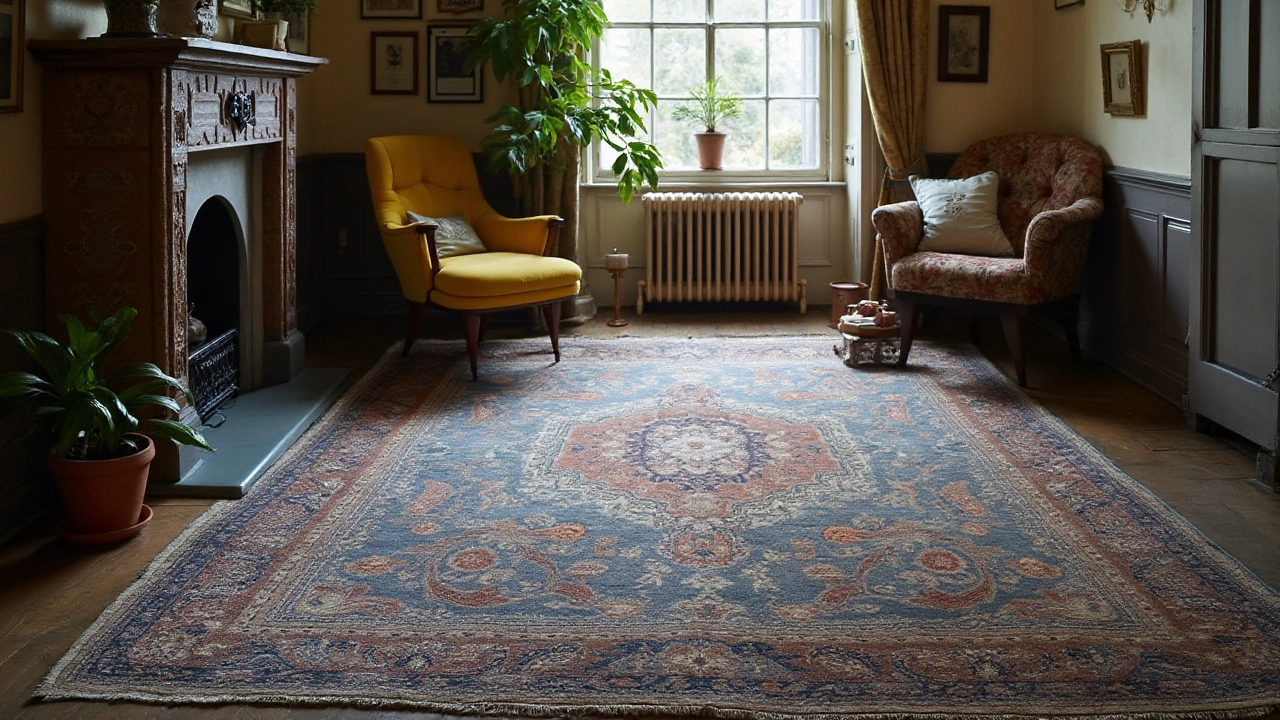
Benefits of Texture
When it comes to choosing a rug that's best at concealing dirt, texture becomes an underappreciated superhero. Textured rugs create a visual illusion that can significantly mask the presence of dirt and wear. The raised parts of a textured pattern can often hide specks and debris in their shadows, making them less noticeable. This is particularly beneficial in high-traffic areas where every bit of help in hiding footprints and occasional mishaps counts. Textures can range from nubby loops to high-low piles and each type brings a unique tactile appeal while quietly doing its job behind the scenes.
Beyond the practical aspect, a textured rug adds another layer of interest and coziness to a space. These rugs are great at adding depth and personality to a room because they interact playfully with light and shadow, bringing a dynamic quality. Think of a living room bathed in sunlight, where a textured rug can cast intricate shadow plays, adding to its charm. Moreover, textured designs like knots or tufted patterns are less likely to show vacuum marks, keeping the rug looking fresh and clean without too much fuss. This clever disguise means less stress about daily cleaning and more time enjoying your beautifully styled sanctuary.
According to interior design expert Daisy Turner, "A textured rug can transform not only the appearance but also the atmosphere of your room. What's attractive about them is their ability to bring a fresh element to a space that's both tactile and visual, simultaneously concealing what you don't want on show."
Clever textural designs not only hide dirt but enhance your room's overall aesthetic appeal.
Types of Textured Rugs
There are several variations to consider, each serving different preferences and functions. Loop pile rugs, for instance, have loops of fiber that stand upright, making them durable and excellent for high footfall areas. The loops naturally hide dirt and diminish visible wear, making them one of the best rugs for busy families or pet owners. Similarly, high-low textured rugs have alternating heights that not only create an intriguing visual pattern but also excellent at concealing any dirt within its dynamic surface.
Textured shag rugs, though not everyone's cup of tea, offer lush comfort and hide small debris tucked between their elongated fibers. These rugs create a warm atmosphere that beckons one to sink their toes into its comforting layer, blissfully unaware of any dust it might harbor. Bamboo silk and wool blends can bring a sophisticated sheen to a textured rug, often used to enhance modern and minimalist interiors. With so much variety, mastering the art of choosing the right texture for your rug becomes an enjoyable part of interior styling.
To sum it up, incorporating texture into your rug not only serves utility in dirt-concealment but it is an opportunity to inject creativity and character into your home. It allows you to play with different elements of design without sacrificing practicality. Next time you stand on a layered masterpiece, know that its intricate design does not just cater to beauty but is actively working in your favor to keep your home looking impeccable.
Cleaning and Maintenance Tips
Keeping your best rugs looking as fresh as when they first graced your floor need not be a daunting task. A good maintenance routine can elongate the life and enhance the appearance of your rugs, making them look like a new centerpiece for years to come. Start by understanding the specifics of your rug’s material. For instance, rugs made from synthetic fibers like polypropylene often come with the advantage of being more resistant to dirt and stains. This magical fiber doesn't hold onto dirt in the same way that natural fibers might, meaning a quick routine vacuum can go a long way. Remember, prevention is better than cure, so try placing entry mats at doors to keep your main rug cleaner for longer. Encourage your family members to remove their shoes upon entering your home, thus preventing an array of outside dirt and grime from settling into your beloved rug.
Certain colors and patterns also play a part in maintenance ease. A rug with a dark background or intricate designs can cleverly conceal minor stains and dust, providing a longer grace period between deep cleans. Vacuuming is your best friend when it comes to maintaining most rugs. A good quality vacuum should be used to keep debris and dust at bay. For delicate or shag rugs, consider a suction only vacuum to avoid damaging the fibers. Vacuum both sides of the rug where possible — you might be surprised at how much dirt accumulates underneath. If a spill happens, and it will, act quickly. Blot (never rub) the area using either a dedicated rug cleaner or a solution of warm water and mild detergent. Do not saturate the fibers; minimal moisture is key. Annual professional cleaning is also recommended, to tackle the deep dirt that’s impossible to reach with regular home cleaning techniques and to maintain the color and texture of your rug at its best.
For those frequent little mishaps, having an at-home cleaning kit handy is crucial. Spot treatments meant for specific rug materials should be part of your arsenal. They’re formulated to work without making those pesky stains more visible. Be sure to read any manufacturer's instructions on cleaning, as using the wrong products can irreparably damage your rug. If your rug tagged along with kids or pets, sprinkle a bit of baking soda to freshen up in between deep cleans. Let it sit for half an hour and then vacuum it up. It works wonders absorbing not only moisture but any lingering odor as well. Rugs made from wool, known for their excellent dirt-hiding capabilities, should be treated with care to prevent felting when wet. In addition, consider rotating your rugs periodically; this prevents uneven wear in high-traffic areas. As the famous interiors expert Billy Baldwin once remarked,
"Hall carpets that wear uniformly are the work of a meticulous homemaker."This can certainly extend to rugs in living rooms and dining areas, too!
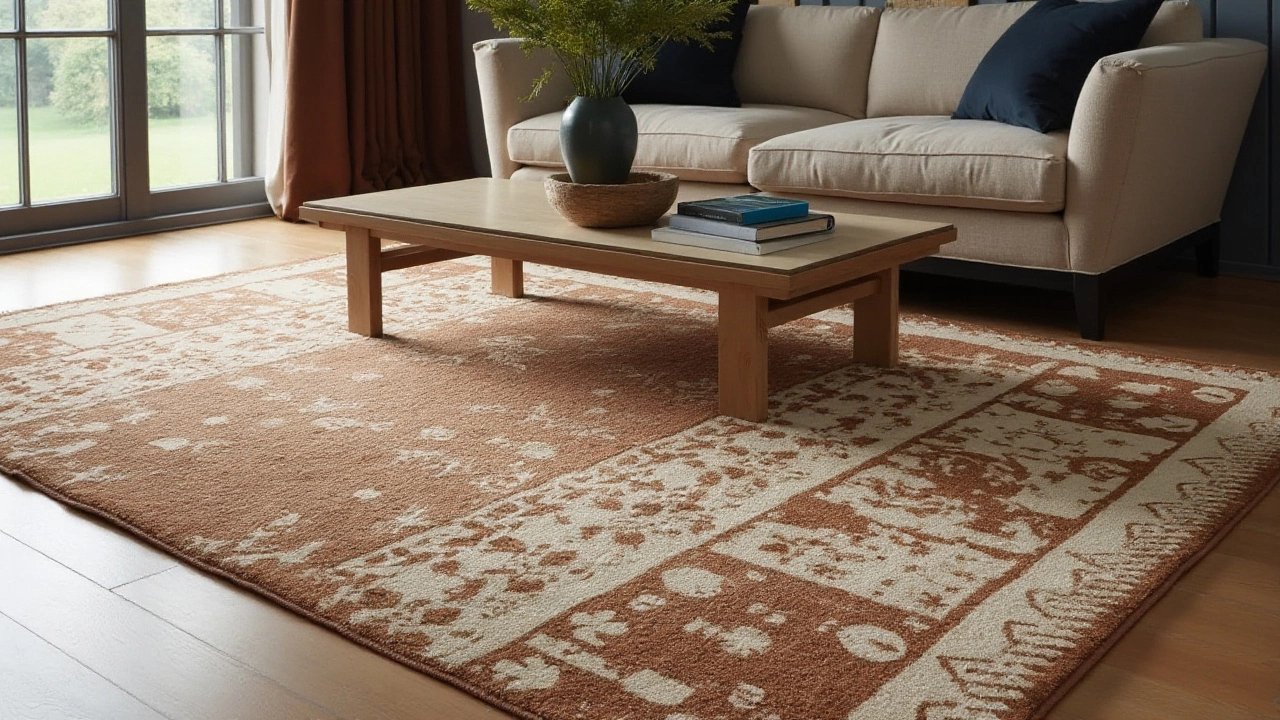
Top Rug Recommendations
Choosing a rug that not only complements your home decor but also manages to hide dirt effectively requires some careful consideration. To help you in your quest, we’ve gathered a selection of top choices that balance style and practicality. These recommendations are known for their durability and tendency to look clean even when life gets a bit messy.
First on our list is the humble yet mighty Polypropylene rug. Favored for its resilience, this synthetic option is not only budget-friendly but can handle high foot traffic with ease. Its fibers resist moisture and stains, making it an excellent choice for families with pets or children. Polypropylene rugs come in various colors and designs, catering to different aesthetic needs while still maintaining their pristine appearance.
If natural fibers are more your style, consider investing in a wool rug. Although a bit more expensive, wool’s thick, dense fibers naturally repel dirt and stains. Wool blends camouflage dirt better than many other natural materials, thanks to their durable structure. Plus, wool is known for its longevity, promising a cozy feel underfoot for many years. It’s common for wool rugs to come in shades and patterns that lend themselves to disguising everyday dust.
For those who desire both luxury and practicality, a dark, patterned rug can be the answer. Patterns like geometric or abstract designs do wonders in hiding minor stains or debris. These eye-catching patterns distract the eye from blemishes that may accumulate over time. As an added bonus, dark colors often show dirt less than their lighter counterparts, ensuring your rug looks fresh with less cleaning. An interesting study showed that consumers prefer patterns for their ability to obscure imperfections.
The use of textures shouldn't be overlooked either. A high-low pile or a shaggy texture adds depth and interest to a rug while concealing small particles and footprints better than flat weaves. These textures work beautifully in modern and bohemian settings, adding a playful touch to rooms needing an infusion of character. Just be sure to vacuum regularly to maintain their lush appearance.
Lastly, consider outdoor rugs for indoors. Thanks to their durability, they’re made to withstand the elements, meaning they resist stains and can be easily cleaned. They are often UV-resistant and moisture-wicking, which contributes to their hidden talents in keeping visible dirt at bay. These rugs can blend seamlessly into a variety of indoor spaces because of their simple design and sturdiness.
"Outdoor rugs have come a long way," says interior designer Sarah Johnson, "Their practicality is rivaled only by their expanding design and color options, making them a viable indoor choice today."
To make a well-informed choice, below is a summary comparison of the discussed rug types and their qualities:
| Rug Type | Key Features |
|---|---|
| Polypropylene | Stain-resistant, affordable, available in many designs |
| Wool | Long-lasting, naturally repels dirt, warm and inviting |
| Dark Patterned | Hides blemishes, adds visual interest, versatile |
| Textured | Conceals dirt, adds dimension, requires regular maintenance |
| Outdoor for Indoor | Durable, weather-resistant, easy-clean, simple chic |
Making the right choice depends largely on your household's specific needs and aesthetic preferences. With these options, your quest for finding a dirt-resistant rug that suits your style becomes a whole lot simpler.

